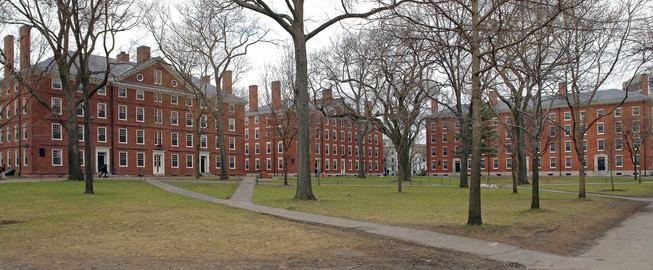Transferring to an Ivy League University
Transferring to an Ivy League school is even more difficult than being accepted as a freshman applicant. For students who aspire to attend Princeton, for example, it hasn’t even been possible to transfer to the school in recent decades. The university recently announced that in 2018 it will offer admission to a small number of transfer students as part of the university’s strategic plan to seek greater diversity.
“Princeton is planning for the reinstatement of a small transfer admissions program as a way to attract students with diverse backgrounds and experiences, such as military veterans and students from low-income backgrounds, including some who began their studies at community colleges,” the university announced earlier this year.
In an important recent development for students who may be planning to transfer, the Common Application organization has announced plans for a new application specially customized for transfer students. Jenny Rickard, the Common App’s chief executive, said that the move to a special application for transferees would help “a very important but under-recognized group of learners . . . by actually acknowledging their diverse backgrounds and experiences.”
At this time, transfer students complete only about 4% of the total applications that are submitted through the Common App platform. The new transfer application will allow transfer students to apply to multiple schools with the new special-purpose application and will also waive certain fees.
IvySelect college admissions counselors take pride in their ability to help high school students applying to college as freshman applicants to construct a target list of 12 or 13 schools of which even the schools at the bottom of the list are attractive to the student. We develop the list so that the student will be happy to attend any of the target schools, not just the ones at the top of the list. However, if a student didn’t use IvySelect initially or if they didn’t anticipate how much they would dislike, say, cold weather, large class sizes, a rural setting or any of the other features of the college they’re attending, then IvySelect is highly qualified to offer expert assistance in transferring to a more desirable school.
There are other reasons why a student may prefer to transfer aside from those characteristics of their current school that they dislike (which go unmentioned in the transfer application to avoid being perceived as a malcontent). A student may be seeking to attend a college from which they were previously rejected or which offers a more challenging educational experience. IvySelect will work with the student to distill a compelling message that clarifies the reasons that your current school doesn’t meet your academic needs and why the transfer school is a better fit.
Some students seek to transfer so that they can participate in specific programs that aren’t offered at their current college or are offered at a much higher quality and breadth at the transfer school. This rationale offers the most frequently successful case for acceptance as a transfer student. IvySelect enables you to articulate this rationale so that the admissions office will view your transfer application positively.
Again, we emphasize that students hoping to secure a spot at a top-tier university face even tougher odds as transfer students than they do as freshman applicants, as seen in the Table below from The Washington Post. The columns show the top national universities listed according to their US News & World Report rankings, the number of transferees entering in a recent year, the number of new freshmen, the total of newly admitted students, and the percentage share of transfers in the total. Schools that do not permit or report transfers are omitted.
Note that, among Ivy League schools, Cornell accepts the largest share of transfer students at 15% and Harvard and Dartmouth the lowest at 1%. Princeton is not shown because their new transfer program won’t begin until next year. The seven branches on the University of California on the list accept a remarkably high average of 33% of students who apply as transferees, due mainly to their commitment to the State’s community colleges.
Table: Transfer Students as a Percent of Total Admissions at Top-Tier Schools
| SCHOOL | TRANSFERS | FRESHMEN | TOTAL | TRANSFER % OF TOTAL |
| Harvard University | 12 | 1659 | 1671 | 1% |
| Yale University | 29 | 1360 | 1389 | 2% |
| Stanford University | 29 | 1678 | 1707 | 2% |
| Massachusetts Institute of Technology | 16 | 1043 | 1059 | 2% |
| Duke University | 13 | 1721 | 1734 | 1% |
| University of Pennsylvania | 150 | 2425 | 2575 | 6% |
| California Institute of Technology | 3 | 226 | 229 | 1% |
| Johns Hopkins University | 40 | 1414 | 1454 | 3% |
| Dartmouth College | 14 | 1152 | 1166 | 1% |
| Northwestern University | 55 | 2005 | 2060 | 3% |
| Brown University | 51 | 1561 | 1612 | 3% |
| Cornell University | 554 | 3225 | 3779 | 15% |
| Vanderbilt University | 207 | 1605 | 1812 | 11% |
| Washington University in St. Louis | 110 | 1734 | 1844 | 6% |
| Rice University | 31 | 949 | 980 | 3% |
| University of Notre Dame | 118 | 2011 | 2129 | 6% |
| University of California-Berkeley | 2187 | 5466 | 7653 | 29% |
| Emory University | 105 | 1365 | 1470 | 7% |
| Georgetown University | 148 | 1578 | 1726 | 9% |
| Carnegie Mellon University | 20 | 1474 | 1494 | 1% |
| University of California-Los Angeles | 3167 | 5764 | 8931 | 35% |
| University of Southern California | 1435 | 3098 | 4533 | 32% |
| University of Virginia | 665 | 3709 | 4374 | 15% |
| Tufts University | 22 | 1348 | 1370 | 2% |
| Wake Forest University | 30 | 1287 | 1317 | 2% |
| University of Michigan-Ann Arbor | 1041 | 6505 | 7546 | 14% |
| University of North Carolina-Chapel Hill | 886 | 3976 | 4862 | 18% |
| New York University | 854 | 5913 | 6767 | 13% |
| Brandeis University | 60 | 859 | 919 | 7% |
| College of William and Mary | 157 | 1511 | 1668 | 9% |
| Georgia Institute of Technology | 499 | 2809 | 3308 | 15% |
| Case Western Reserve University | 38 | 1282 | 1320 | 3% |
| University of California-Santa Barbara | 1592 | 4747 | 6339 | 25% |
| University of California-Irvine | 2024 | 5424 | 7448 | 27% |
| University of California-San Diego | 2461 | 4921 | 7382 | 33% |
| Boston University | 478 | 3915 | 4393 | 11% |
| Rensselaer Polytechnic Institute | 121 | 1331 | 1452 | 8% |
| Tulane University | 116 | 1647 | 1763 | 7% |
| University of California-Davis | 3138 | 5377 | 8515 | 37% |
| University of Illinois-Urbana Champaign | 1331 | 6937 | 8268 | 16% |
| University of Wisconsin-Madison | 770 | 6264 | 7034 | 11% |
| Lehigh University | 29 | 1299 | 1328 | 2% |
| Northeastern University | 460 | 2944 | 3404 | 14% |
| Pennsylvania State University | 425 | 8183 | 8608 | 5% |
| University of Florida | 1968 | 6537 | 8505 | 23% |
| University of Miami | 592 | 2076 | 2668 | 22% |
| Ohio State University | 2606 | 7079 | 9685 | 27% |
| Pepperdine University | 106 | 656 | 762 | 14% |
| University of Texas-Austin | 2325 | 7285 | 9610 | 24% |
| University of Washington | 1730 | 6360 | 8090 | 21% |
| Yeshiva University | 31 | 809 | 840 | 4% |
| George Washington University | 492 | 2416 | 2908 | 17% |
| University of Connecticut | 805 | 3588 | 4393 | 18% |
| University of Maryland at College Park | 2004 | 4129 | 6133 | 33% |
| Worcester Polytechnic Institute | 42 | 1056 | 1098 | 4% |
| Clemson University | 1293 | 3475 | 4768 | 27% |
| Purdue University-West Lafayette | 586 | 6372 | 6958 | 8% |
| Southern Methodist University | 287 | 1459 | 1746 | 16% |
| University of Georgia | 1116 | 5261 | 6377 | 18% |
| Brigham Young University-Provo | 734 | 4072 | 4806 | 15% |
| Fordham University | 343 | 2258 | 2601 | 13% |
| University of Pittsburgh | 762 | 3847 | 4609 | 17% |
| University of Minnesota-Twin Cities | 2175 | 5530 | 7705 | 28% |
| Texas A&M University-College Station | 2525 | 10835 | 13360 | 19% |
| Virginia Tech | 958 | 5494 | 6452 | 15% |
| American University | 287 | 1787 | 2074 | 14% |
| Baylor University | 454 | 3625 | 4079 | 11% |
| Rutgers-New Brunswick | 2541 | 6412 | 8953 | 28% |
| Clark University | 52 | 547 | 599 | 9% |
| Colorado School of Mines | 159 | 999 | 1158 | 14% |
| Indiana University-Bloomington | 912 | 7716 | 8628 | 11% |
| Michigan State University | 1668 | 8055 | 9723 | 17% |
| University of Delaware | 426 | 4179 | 4605 | 9% |
| University of Massachusetts-Amherst | 1158 | 4642 | 5800 | 20% |





